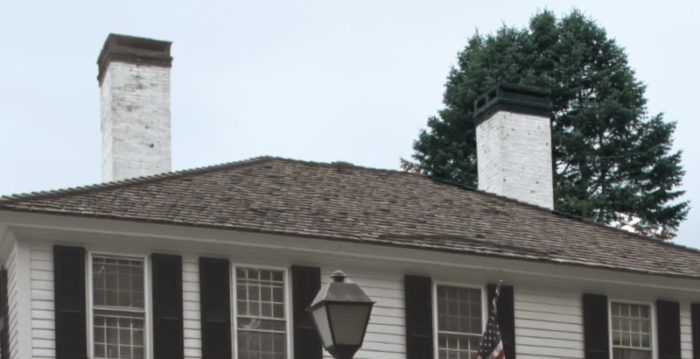White-Painted Chimneys
Avoid using an oil or latex paint; try a vapor-permeable mineral-based paint.

I’ve seen many historic homes along the New England coast that have had their brick chimneys painted white beneath a black cap. I’d like to replicate the look. Is there architectural significance to this detail? I’ve heard this referred to as a “Tory chimney,” and that it was used during the American Revolution to symbolize that a Loyalist lived at the home. More importantly than the history, would I cause any damage to the brick by painting it? What type of paint do you recommend that I use?
—Rob Y., via email
Mason Lord: The painting part of the question is relatively straightforward. Avoid using an oil or latex paint. There is too much risk of trapping moisture and causing the brick to spall during the freeze-thaw cycle. Also, it’s likely these finishes won’t be durable. Who can afford to have a painter set up on a roof every five to ten years to prep and recoat?
There are two German companies, Keim and Beeck, that produce vapor-permeable mineral-based paints that penetrate and chemically react with the masonry substrate. Buildings painted with Keim paints in the 19th century are still in excellent condition today according to their website, and both white and black are included in their color charts.
The first part of the question is less clear. Many online sources repeat the Tory-chimney anecdote. Being a skeptic as well as a specialist in historic houses, I turned to trustworthy sources, speaking with several architectural historians of note. My expert colleagues have never found this information in any texts and believe it to be an after-the-fact tale, possibly started during the nostalgia of the colonial revival period of architecture in the late 19th and early 20th centuries.
























View Comments
Very informative post.